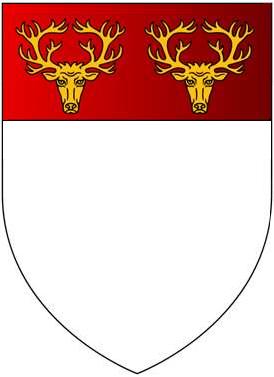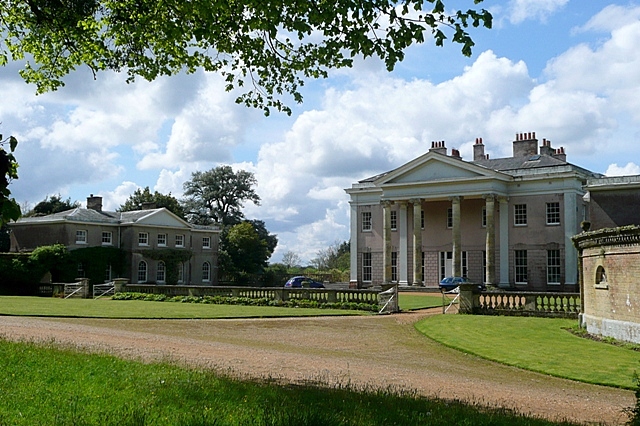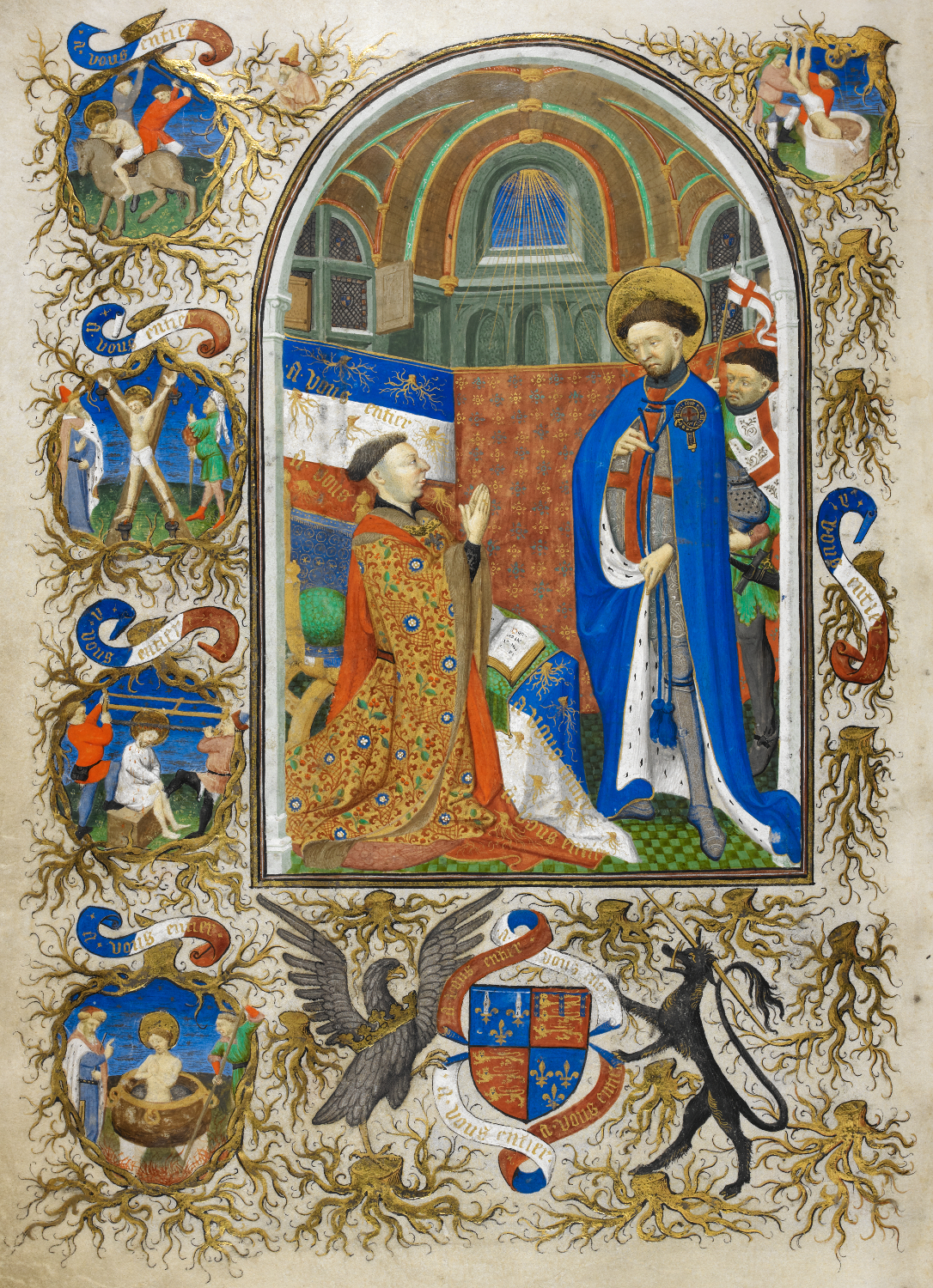|
South Charford
South Charford is a hamlet in the New Forest district, in Hampshire, England. It is in the civil parish of Breamore on the west bank of the River Avon. History South and North Charford are usually identified with the "Cerdic's ford" which appears twice in the ''Anglo-Saxon Chronicle''. It first is mentioned under the entry for the year 508 when we are told that following a battle to the east "the land as far as Cerdic's ford was named ''Natanleaga''" For the year 519 we are told that "Cerdic and Cynric succeeded to the kingdom West_Saxons.html" ;"title="f the West Saxons">f the West Saxons and in the same year they fought against the Britons at a place called Cerdic's ford". If a battle really did take place here then it is possible that the boundary of Hampshire was first established here.Charford, Old Hampshire Gaze ... [...More Info...] [...Related Items...] OR: [Wikipedia] [Google] [Baidu] |
Breamore
Breamore ( ) is a village and Civil parishes in England, civil parish near Fordingbridge in Hampshire, England. The parish includes a notable Elizabethan English country house, country house, Breamore House, built with an E-shaped ground plan. The Church of England parish church of Mary (mother of Jesus), Saint Mary has an Anglo-Saxon architecture, Anglo-Saxon rood. Overview The village of Breamore is mainly situated along the A338 road between Fordingbridge and Downton, Wiltshire, Downton, although the Saxon church and Breamore House are about three-quarters of a mile west of the road. Within the Parish is the Marsh (an important surviving manorial green) and the River Avon, Hampshire, River Avon: both are listed as Sites of Special Scientific Interest. Other parts of the Parish fall within the Cranborne Chase and West Wiltshire Downs Area of Outstanding Natural Beauty. History Breamore Down northwest of the village has several Bronze Age Britain, Bronze Age bowl barrows. ... [...More Info...] [...Related Items...] OR: [Wikipedia] [Google] [Baidu] |
John Popham (military Commander)
Sir John Popham (c. 1395 – c. 1463) was MP for Hampshire and Sheriff of Hampshire. He was a military commander and speaker-elect of the House of Commons. He took part in Henry V's invasion of France in 1415 and in the French wars under John of Lancaster, 1st Duke of Bedford. He was elected Speaker of the House of Commons in 1449 but was permitted by King Henry VI to decline the office on the ground of infirmity. Origins He was the son of Sir John Popham (died 1418) of South Charford, Hampshire, (four times MP for Hampshire and Sheriff of Hampshire in 1404), who was a younger son of Sir John Popham of Popham, Hampshire and a younger brother of Henry Popham, Sheriff of Hampshire (c. 1339 – 1418) of Popham, seven times MP for Hampshire. Career He may have been educated at Bishop Wykeham's College of St Mary at Winchester. John and his first cousin Sir Stephen Popham (c. 1386 – 1444), MP, (son of Henry Popham) were men-at-arms under Edward, Duke of York, in the French c ... [...More Info...] [...Related Items...] OR: [Wikipedia] [Google] [Baidu] |
Tithing
A tithing or tything was a historic English legal, administrative or territorial unit, originally ten hides (and hence, one tenth of a hundred). Tithings later came to be seen as subdivisions of a manor or civil parish. The tithing's leader or spokesman was known as a ''tithingman''. Etymology The noun ''tithing'' breaks down as ''ten'' + ''thing'', which is to say, a thing (an assembly) of the households who live in an area that comprises ten hides. Comparable words are Danish ''herredthing'' for a hundred, and English ''husting'' for a single household. Sound changes in the prehistory of English are responsible for the first part of the word looking so different from the word ''ten''. In the West Germanic dialects which became Old English, ''n'' had a tendency to elide when positioned immediately before a ''th''. The noun is not to be confused with the verb ''to tithe'', its present participle ''tithing'', nor the act of ''tithing'', though they partly share the same origin. ... [...More Info...] [...Related Items...] OR: [Wikipedia] [Google] [Baidu] |
Taxus Baccata
''Taxus baccata'' is a species of evergreen tree in the family Taxaceae, native to western, central and southern Europe (including Britain and Ireland), northwest Africa, northern Iran, and southwest Asia.Rushforth, K. (1999). ''Trees of Britain and Europe''. Collins . It is the tree originally known as yew, though with other related trees becoming known, it may now be known as common yew, English yew, or European yew. It is primarily grown as an ornamental. Most parts of the plant are poisonous, with toxins that can be absorbed through inhalation and through the skin; consumption of even a small amount of the foliage can result in death. Taxonomy and naming The word ''yew'' is from Proto-Germanic ''*īwa-'', possibly originally a loanword from Gaulish ''*ivos'', compare Breton ''ivin,'' Irish '' ēo'', Welsh ''ywen'', French '' if'' (see Eihwaz for a discussion). In German it is known as ''Eibe''. ''Baccata'' is Latin for ''bearing berries''. The word ''yew'' as it was originally ... [...More Info...] [...Related Items...] OR: [Wikipedia] [Google] [Baidu] |
Hale, Hampshire
Hale is a small village and civil parish in Hampshire, England. It lies on the border of the New Forest, overlooking the valley of the River Avon. The village is about north-east of the town of Fordingbridge, and about south of the city of Salisbury. Within the parish stands Hale House, a large 18th-century mansion which was the country house of architect Thomas Archer, who also rebuilt Hale church in 1717. Overview Hale is a village to the northeast of Fordingbridge in an area of woodland, to the east of the River Avon. It is a scattered community with some thatched cottages around the green, a village hall, and a Victorian school building which still houses the primary school. At the centre of the village is Hatchet Green, which is a Site of Special Scientific Interest and a Conservation Area.Hale Parish Co ... [...More Info...] [...Related Items...] OR: [Wikipedia] [Google] [Baidu] |
Breamore Priory
Breamore Priory was a priory of Austin canons in Breamore, Hampshire, England. Foundation The priory was founded some time towards the end of the reign of Henry I of England, Henry I by Baldwin de Redvers and his uncle Hugh de Redvers. 12th to 16th centuries In the 14th century, the Courtenay Compendium was created at Breamore. Dissolution The last prior, Prior Finch, wrote at least twice to Thomas Cromwell proffering his service and that of his house, and desiring Cromwell's favour. But according to the ''Valor Ecclesiasticus'' of 1535 the annual value of the priory was £200 5s. 1½d., together with two pounds of pepper. Less alms and other obligatory outgoings of £45 11s. the annual value was only £154 14s. 1½d. and the pepper. This brought the house well below the limit for the first series of dissolutions, and it was surrendered on 10 July 1536. Post-Dissolution The site of the priory and all its possessions was granted in November 1536 to Henry, Marquis of Exeter, and ... [...More Info...] [...Related Items...] OR: [Wikipedia] [Google] [Baidu] |
Francis Greville, 8th Baron Brooke
Francis Greville, 1st Earl of Warwick, KT (10 October 1719 – 8 July 1773), known as Lord Brooke from 1727 to 1746 and Earl Brooke from 1746, was a British nobleman. He inherited Warwick Castle and the title of Baron Brooke from his father in 1727. His education included time as a gentleman commoner at Winchester College (around 1731). He was created Earl Brooke, of Warwick Castle, on 7 July 1746, and became Lord Lieutenant of Warwickshire in 1749. He became a Knight of the Thistle in 1743. In 1759, he petitioned George II for the title Earl of Warwick when the last Earl of Warwick from the Rich family died. Francis' petition was granted, and Warwick Castle was once again held by the Earls of Warwick. He was responsible for various renovations to the castle, including the construction of the State Dining Room and the private apartments. His early dalliances with the Neo-Gothic style even caught the attention of the infamous Horace Walpole, who referred to him once as "little Br ... [...More Info...] [...Related Items...] OR: [Wikipedia] [Google] [Baidu] |
Fulke Greville, 5th Baron Brooke
Fulke may refer to: *Fulke d'Aunou, also written Fulco and Foulques (1004-1080?), Baron of Aunou-le-Faucon, Normandy. Second cousin of William of Normandy and one of 30 knights named as present with William at the Battle of Hastings (1066), he was awarded lands around High Littleton, Somerset, England *Fulke Lovell (or Fulk Lovel) was a medieval Bishop of London elect *Fulke Greville, 1st Baron Brooke (1554–1628), Elizabethan poet, dramatist, and statesman *Fulke Greville (1717–1806) (1717–1806), the youngest son of Henry Somerset, 1st Duke of Beaufort *Fulke Greville-Nugent, 1st Baron Greville (1821–1883), Irish politician *Fulke Johnson Houghton (b. 1940), British racehorse trainer *Fulke Walwyn (1910–1991), British jockey and racehorse trainer *Pierre Fulke (born 1971), Swedish golfer who played on the European Tour *Robert Fulke Greville (1751–1824), British Member of Parliament (MP) and courtier *Robert Fulke Greville (landowner) (1800–1867), politician, soldier an ... [...More Info...] [...Related Items...] OR: [Wikipedia] [Google] [Baidu] |
Fordingbridge
Fordingbridge is a town and broader civil parish with a population of 6,000 on the River Avon in the New Forest District of Hampshire, England, near the Dorset and Wiltshire borders and on the edge of the New Forest, famed for its late medieval seven-arch bridge. It is southwest of London, and south of the city of Salisbury. Fordingbridge is a former market town. The Avon Valley Path passes through the town. The town excluding linear settlement Sandleheath (included in its headline population with other outlying houses, totalling 1,526 residents) has a density of 30.2 persons per hectare (7820 per sq. mi.). Since 1982 Fordingbridge has been twinned with Vimoutiers in Normandy, France. Overview The Great Bridge, from which the town received its present name, is a major feature of the town. It has seven arches and can be seen from the town's large riverside park and recreation ground. The park contains a children's play area, secluded memorial gardens, and large sports playi ... [...More Info...] [...Related Items...] OR: [Wikipedia] [Google] [Baidu] |
Burgate, Hampshire
Burgate (divided into Upper Burgate and Lower Burgate) is a hamlet situated on the western edge of the New Forest National Park in Hampshire, England. The hamlet is situated on the A338 road. The nearest town is Fordingbridge, which lies approximately 0.5 miles (1 km) to the southwest. Overview Burgate is a hamlet on the A338 road just to the east of the town of Fordingbridge. It was known locally for the Tudor Rose Inn, which has now gone out of business. The hamlet is just to the west of the River Avon, and there is a footbridge over the river at Burgate. The footbridge is a steel suspension bridge made of reused parts of a Bailey bridge, and was erected in 1949-50. Burgate Manor, in Lower Burgate, is the headquarters of the Game & Wildlife Conservation Trust. Game & Wildlife Conservation Trust, retrieved 29 February 2012 ... [...More Info...] [...Related Items...] OR: [Wikipedia] [Google] [Baidu] |
John Of Lancaster, 1st Duke Of Bedford
John of Lancaster, Duke of Bedford KG (20 June 138914 September 1435) was a medieval English prince, general and statesman who commanded England's armies in France during a critical phase of the Hundred Years' War. Bedford was the third son of King Henry IV of England, brother to Henry V, and acted as regent of France for his nephew Henry VI. Despite his military and administrative talent, the situation in France had severely deteriorated by the time of his death. Bedford was a capable administrator and soldier, and his effective management of the war brought the English to the height of their power in France. However, difficulties mounted after the arrival of Joan of Arc, and his efforts were further thwarted by political divisions at home and the wavering of England's key ally, Duke Philip of Burgundy and his faction, the Burgundians. In the last years of Bedford's life, the conflict devolved into a war of attrition, and he became increasingly unable to gather the necessa ... [...More Info...] [...Related Items...] OR: [Wikipedia] [Google] [Baidu] |
Henry V Of England
Henry V (16 September 1386 – 31 August 1422), also called Henry of Monmouth, was King of England and Lord of Ireland from 1413 until his death in 1422. Despite his relatively short reign, Henry's outstanding military successes in the Hundred Years' War against France made England one of the strongest military powers in Europe. Immortalised in Shakespeare's "Henriad" plays, Henry is known and celebrated as one of the greatest warrior-kings of medieval England. During the reign of his father Henry IV, Henry gained military experience fighting the Welsh during the revolt of Owain Glyndŵr and against the powerful aristocratic Percy family of Northumberland at the Battle of Shrewsbury. Henry acquired an increased role in England's government due to the king's declining health, but disagreements between father and son led to political conflict between the two. After his father's death in 1413, Henry assumed control of the country and asserted the pending English claim t ... [...More Info...] [...Related Items...] OR: [Wikipedia] [Google] [Baidu] |






.jpg)